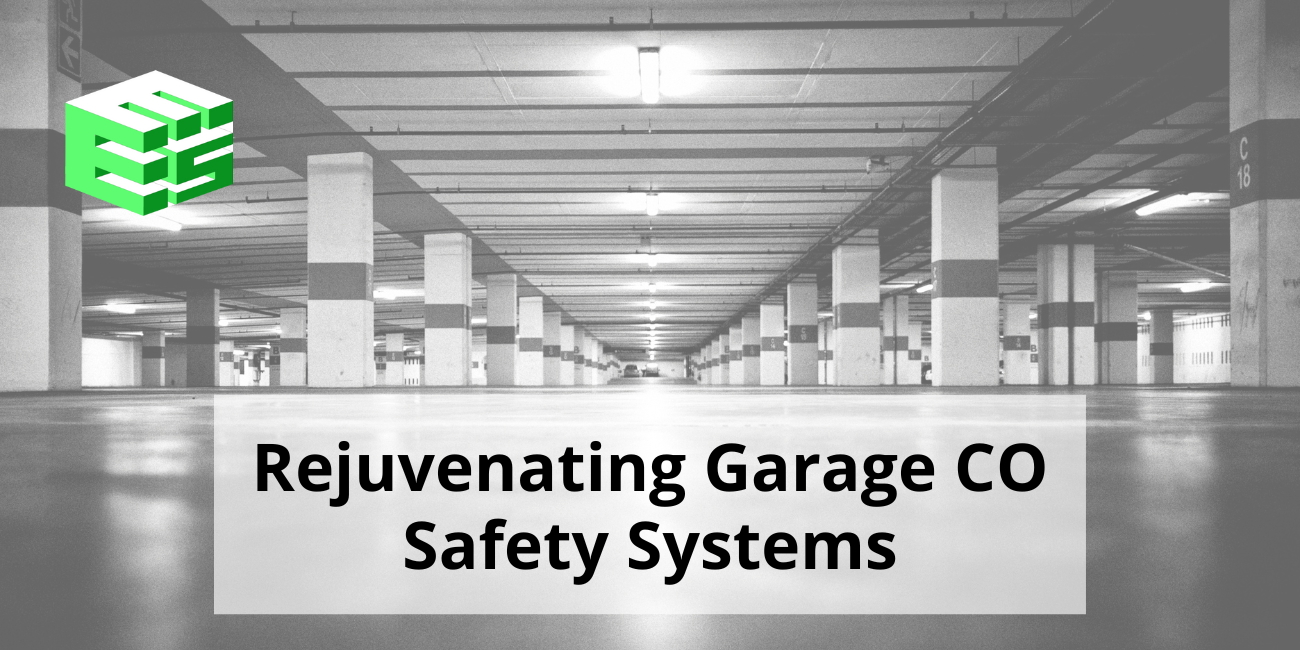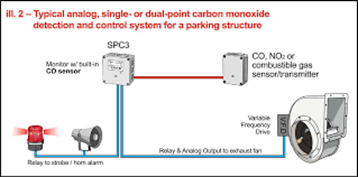 It has become common practice to build underground or under-building parking lots for facilities. Each structure requires a CO monitoring system that jumps in to action when the level of CO gas becomes too high. Every one of these systems requires periodic (semi-annual) calibration and testing to protect the patrons and the building owners.
It has become common practice to build underground or under-building parking lots for facilities. Each structure requires a CO monitoring system that jumps in to action when the level of CO gas becomes too high. Every one of these systems requires periodic (semi-annual) calibration and testing to protect the patrons and the building owners.
What is a CO Monitoring System? Why Would a Garage Need One?
It may look like a concrete room with lines painted on the floor, but an indoor parking lot is a needed resource. But it’s also a liability to the building owner, as well as a potential danger to the users. Carbon monoxide, or CO, is an odorless, colorless gas that is slightly lighter than air but has a much greater affinity than oxygen with hemoglobin (the oxygen transporting facet of human blood). As such, if it gets in the bloodstream it takes quite a while to dissipate. For this reason, it is toxic to oxygen-breathing life; including humans, pets, and even lawyers/politicians (many of whom don’t count as humans).
Every indoor lot has CO sensors which are wired and programmed to react to increased levels of CO and turn on fans to ventilate the confined spaces so that the occupants can get enough air to breathe. When these systems work properly, the danger is mitigated and the occupant, as well as the owner, is safe to function.
Many garage owners do not realize – or realize after getting a citation from the local fire department- that these systems require inspection, calibration, and sensor replacement on a defined schedule from the equipment manufacturer. If there is an actual event, it is very expensive to be the building owner without a trail of compliance.
Transforming Garage Systems to be Safer and Compliant
EES has performed many calibrations, sensor replacements, and functional verifications for an increasing number of garages over the past few years. We have the expertise, calibration tools, and organization to, once contracted, keep the CO safety systems in compliance.
We have taken over quite a few systems that have lapsed in maintenance. Our first priority is to get the building owner in compliance by analyzing the existing equipment, getting necessary replacement sensors on order, and assuring that the entire CO system is working as designed. Once that is achieved, we make recommendations to improve the design, and generate a proactive periodic schedule to keep the owner in compliance to avoid any legal issues whilst maintaining the best environment for the patrons.

If you’re interested in getting your garage compliant and safe, reach out to the EES team of experts.

